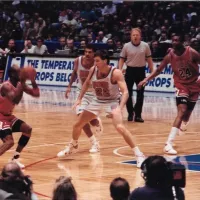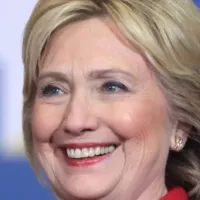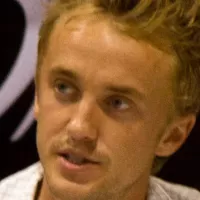Philadelphia, or Philly, is Pennsylvania's most populous city and the sixth-largest in the United States with 1.6 million residents in 2020. Its metropolitan area ranks ninth nationally, housing 6.33 million people. The city is renowned for its rich culture, diverse cuisine, and significant historical importance, while also maintaining a contemporary influence in business, industry, sports and music.
1901: Philadelphia Athletics Begin
In 1901, the Philadelphia Athletics baseball team began playing in Philadelphia.
1902: Renaming to Philadelphia Electric Company (PECO)
In 1902, the Brush Electric Light Company of Philadelphia was renamed Philadelphia Electric Company (PECO).
1905: Market-Frankford Line Opens (West)
In 1905, the subway section of Philadelphia's Market–Frankford Line opened to the west of City Hall.
1908: Market-Frankford Line Opens (East)
In 1908, the subway section of Philadelphia's Market–Frankford Line opened to the east of City Hall.
1909: Decommissioning of Fairmount Water Works
In 1909, Philadelphia decommissioned the Fairmount Water Works as the city transitioned to modern sand filtration methods for its water supply.
1910: General Strike of 1910
In 1910, a general strike occurred that shut down the entire city of Philadelphia.
1911: Electric Trolley Statistics
In 1911, Philadelphia had nearly 4,000 electric trolleys running on 86 lines.
August 1912: First Experimental Radio License
In August 1912, Philadelphia issued its first experimental radio license to St. Joseph's College.
1917: City Council Shrinks to One House
In 1917, following outrage over the election-year murder of a Philadelphia police officer, the City Council reduced from two houses to just one.
August 7, 1918: Highest Recorded Temperature
On August 7, 1918, Philadelphia recorded its highest temperature of 106 °F (41 °C).
July 1919: Race Riot During Red Summer
In July 1919, Philadelphia suffered a race riot during the Red Summer, a period of post-World War I unrest characterized by competition between recent immigrants and Blacks for jobs.
1922: Minimal Rainfall in 1922
In 1922, Philadelphia recorded 29.31 inches (744 mm) of rain, the lowest amount in its recorded history.
1922: First Commercial AM Radio Stations
In 1922, the first commercial AM radio stations began broadcasting in Philadelphia. These included WIP (owned by Gimbels department store), WFIL (owned by Strawbridge & Clothier department store), WOO (owned by Wanamaker's department store), WCAU, and WDAS.
1925: Philadelphia Daily News First Published
In 1925, the Philadelphia Daily News newspaper was first published.
1928: Broad Street Line Opens (First Stage)
In 1928, the Broad Street Line in Philadelphia opened in its first stage.
1930: African-American Population Growth
By 1930, the African-American population of Philadelphia had increased from 31,699 to 219,559 due to the Great Migration from the South.
1932: Roosevelt Fails to Carry Philadelphia
Despite the Democratic surge after the Great Depression, in 1932 Franklin D. Roosevelt did not win Philadelphia, as Pennsylvania was one of the few states won by Herbert Hoover.
1932: Construction of the PSFS Building
In 1932, the PSFS Building, designed by George Howe and William Lescaze, became the first modern International Style skyscraper in the United States.
February 9, 1934: Lowest Officially Recorded Temperature
On February 9, 1934, Philadelphia recorded its lowest temperature of −11 °F (−24 °C).
1936: Roosevelt Wins Philadelphia
In 1936, voter turnout surged, and Franklin D. Roosevelt carried Philadelphia with over 60% of the vote, marking a shift to Democratic support.
1937: Establishment of the Philadelphia Housing Authority
In 1937, the Philadelphia Housing Authority (PHA) was established. It is now the nation's fourth-largest housing authority, serving approximately 81,000 people with affordable housing.
1938: Broad Street Line Opens (Final Stage)
In 1938, the Broad Street Line in Philadelphia opened in its final stage.
1938: Independence Day Formalized
In 1938, the annual celebration of the Declaration of Independence was formalized as Independence Day, becoming one of the eleven designated U.S. federal holidays.
1940: Demographic Makeup in 1940
In 1940, non-Hispanic whites constituted 86.8% of Philadelphia's population.
1946: Golden State Warriors Played in Philadelphia
In 1946, the Golden State Warriors basketball team began playing in Philadelphia.
1947: Area Code Assignment
In 1947, Southeastern Pennsylvania was assigned the 215 area code when the North American Numbering Plan went into effect.
1950: Start of Population Decline
Around 1950, Philadelphia's population began to decline, with the city losing approximately 25 percent of its residents by 2000.
1950: Philadelphia's Peak Population
In 1950, Philadelphia recorded its highest population of 2,071,605 residents, after which the city's population began to decline.
1950: Population Peak and Subsequent Decline
In 1950, Philadelphia's population peaked at more than two million residents before declining due to industrial restructuring and suburbanization.
January 1952: New Officials Take Office Under Home Rule Charter
In January 1952, newly elected officials took office under Philadelphia's new Home Rule Charter.
1952: Bandstand Premieres
In 1952, WFIL (later renamed WPVI) premiered the television show Bandstand, which later became the nationally broadcast American Bandstand hosted by Dick Clark.
1952: Philadelphia County Functions Assumed by City
In 1952, all county functions of Philadelphia County were assumed by the city, rendering the county a legal nullity.
1952: Decades of Democratic Mayors Begin
Since 1952, every Philadelphia mayor has been a Democrat.
1954: La Salle Wins NCAA Championship
In 1954, La Salle University won the championship of the NCAA Division I men's basketball tournament.
1954: Philadelphia Athletics Move
In 1954, the Philadelphia Athletics baseball team moved to another city.
1955: Creation of the Philadelphia Historical Commission
In 1955, the Philadelphia Historical Commission was created to preserve the cultural and architectural history of the city.
1957: American Bandstand Goes National
In 1957, the show Bandstand was renamed American Bandstand and began national syndication on ABC, hosted by Dick Clark.
1959: Percent for Art Ordinance
In 1959, lobbying by the Artists Equity Association helped create the Percent for Art ordinance, the first for a U.S. city.
1962: Warriors Move from Philadelphia
In 1962, the Golden State Warriors basketball team moved from Philadelphia to another city.
1964: American Bandstand Moves to Los Angeles
In 1964, American Bandstand, a music program produced in Philadelphia, moved to Los Angeles.
1964: Specter on Warren Commission
In 1964, Arlen Specter was assistant counsel on the Warren Commission.
1966: Arlen Specter Becomes District Attorney
In 1966, Arlen Specter became the district attorney for the city.
1966: Founding of Geno's Steaks
In 1966, Geno's Steaks was founded, becoming a rival to Pat's King of Steaks across the intersection of 9th Street and Passyunk Avenue in the Italian Market of South Philadelphia.
1972: Listing on the National Register of Historic Places
In 1972, Fairmount Park and Wissahickon Valley Park, along with Colonial Revival, Georgian and Federal-style mansions, were listed as one entity on the National Register of Historic Places.
1972: Minimal Snowfall in 1972-73 Winter
The winter of 1972-73 saw trace amounts of snowfall in Philadelphia.
1973: Soccer Title Win
In 1973, Philadelphia won a title in soccer in the now-defunct North American Soccer League.
1974: Arlen Specter Leaves DA Office
In 1974, Arlen Specter left the office of District Attorney.
1975: Rebuilding of the City Tavern
In 1975, the City Tavern, a replica of a historic 18th-century building, was rebuilt on the same site as part of Independence National Historical Park after being demolished in 1854 due to a fire. The tavern offers authentic 18th-century recipes, served in period dining rooms, wine cellar rooms, and an outdoor garden.
June 1976: Sister Cities Park Dedication
In June 1976, the Sister Cities Park was dedicated in Philadelphia. The park was built to commemorate Philadelphia's first two sister city relationships, with Tel Aviv and Florence.
1976: Release of the Film Rocky
In 1976, the film "Rocky" was released, making the Philadelphia Museum of Art's steps famous.
1980: Zoning Code in 1980
In 1980, Philadelphia operated under a specific zoning code, which was later overhauled.
1981: Arlen Specter Becomes Senator
In 1981, Arlen Specter began serving as a Republican senator for Pennsylvania.
1983: 76ers Win NBA Finals
In 1983, the Philadelphia 76ers defeated the Los Angeles Lakers in the NBA Finals, marking a championship victory for the city.
1984: Chinatown Gate Erection
In 1984, the Chinatown Gate, crafted by artisans from Tianjin, was erected at 10th Street and Arch Street as a symbol of the sister city relationship.
1984: Mural Arts Program Creation
In 1984, the Department of Recreation's Mural Arts Program was created to beautify neighborhoods and provide an outlet for graffiti artists.
July 13, 1985: Live Aid Concert
On July 13, 1985, John F. Kennedy Stadium in Philadelphia was the American venue for the Live Aid concert, a major global fundraising event.
1985: Villanova Wins NCAA Tournament
In 1985, Villanova University won the NCAA Division I men's basketball tournament.
1985: MOVE Bombing
In 1985, the MOVE Bombing occurred in the Cobbs Creek neighborhood, resulting in 11 deaths and the destruction of 61 homes.
1987: Completion of One Liberty Place
In 1987, One Liberty Place was completed, surpassing City Hall to become the tallest building in Philadelphia.
1987: City Ownership of Philadelphia Gas Works
In 1987, Philadelphia Gas Works (PGW) came under city ownership.
1987: One Liberty Place Surpasses City Hall Height
In 1987, a decision permitted One Liberty Place to become the first building in city history to surpass the height of William Penn's statue atop City Hall, a decision later associated with the "Curse of Billy Penn."
1990: Increase in Foreign-Born Population
Between 1990 and 2017, the foreign-born population in Philadelphia doubled, constituting 13.8% of the city's total population.
1990: High Murder Rate
In 1990, Philadelphia had 500 to 503 murders, resulting in a rate of 31.5 per 100,000 people.
1990: Past Homicide Record
In 1990, Philadelphia previously saw a high of 500 to 503 murders.
1991: Ronald D. Castille Leaves Office
In 1991, Ronald D. Castille, the last Republican to hold the office, left his position as District Attorney of Philadelphia.
January 19, 1994: Last Occurrence of 0°F Temperature
The last time Philadelphia experienced a temperature at or below 0 °F (−18 °C) was on January 19, 1994.
1994: Creation of Area Code 610
In 1994, the geographic area covered by area code 215 was split nearly in half when area code 610 was created.
January 1996: Heaviest Single-Storm Snowfall
In January 1996, Philadelphia experienced its heaviest single-storm snowfall, with 30.7 inches (78 cm) recorded.
1997: Area Code 267 Added
In 1997, overlay area code 267 was added to the 215 service area.
1999: Sam Katz Loses Mayoral Race
In 1999, Sam Katz ran as the Republican nominee for mayor but lost to Democrat John Street.
1999: Area Code 484 Added
In 1999, area code 484 was added to the 610 area.
2000: Increase in Foreign-Born Population
Between 2000 and 2016, Philadelphia's foreign-born population increased by 69%, constituting nearly 20% of the city's workforce.
2000: End of Population Decline
By 2000, Philadelphia's population decline, which had started around 1950, began to reverse due to immigration.
2000: Republican National Convention
In 2000, Philadelphia hosted the Republican National Convention.
2000: Reduction in Particle Pollution Days
Since 2000, Philadelphia has seen fewer days of high particle pollution, dropping from about 19 days per year to about 3, along with an approximate 30% reduction in annual levels of particle pollution.
2001: Delayed Overlay Code Introduction
In 2001, a plan to introduce a third overlay code to both service areas, with area code 445 to 215 and area code 835 to 610, was delayed and later rescinded.
2001: Jewish Population in Philadelphia
In 2001, the Philadelphia metropolitan area's Jewish population was estimated at 206,000, making it the sixth-largest in the U.S. at that time.
2001: Reduction in High Ozone Days
Since 2001, Philadelphia has experienced a significant reduction in high ozone days, decreasing from nearly 50 days per year to fewer than 10.
2002: Murder Count Drops
In 2002, the murder count in Philadelphia dropped to 288.
2003: Sam Katz Loses Mayoral Race
In 2003, Sam Katz ran as the Republican nominee for mayor but lost to Democrat John Street.
2004: Philadelphia Named Tortured Sports City
In 2004, during the city's championship drought, ESPN placed Philadelphia second on its list of "The Fifteen Most Tortured Sports Cities".
July 2, 2005: Live 8 Concert
On July 2, 2005, Philadelphia hosted the Live 8 concert, which attracted about 700,000 people to the Benjamin Franklin Parkway.
2005: Graduation Rate and PSSA Scores
In 2005, Philadelphia had a district graduation rate of 52%, and district-run schools scored an average of 37.4% on math and 35.5% on reading on the Pennsylvania System of School Assessment (PSSA).
2005: Reintroduction of Trolley Service
In 2005, SEPTA reintroduced trolley service to the Girard Avenue Line, Route 15.
2006: Peak in Shooting Incidents and Major Crimes
In 2006, Philadelphia saw a peak of 1,857 shooting incidents and 85,498 major crimes reported.
2006: Philadelphia's Homicide Rate Highest Among Major Cities
In 2006, Philadelphia's homicide rate of 27.7 per 100,000 people was the highest among the country's 10 most populous cities.
2006: Population Low in 2006
In 2006, Philadelphia's population reached a low of 1,488,710 residents before it began to increase again.
2006: Murder Count Rises
In 2006, the murder count rose to 406.
2007: Overhaul of Zoning Code Begins
From 2007 to 2012, Philadelphia began overhauling its 1980 zoning code to facilitate future community development.
2007: Population Growth Begins
In 2007, Philadelphia started experiencing population growth, which has continued with incremental annual increases.
2007: Comcast Center Becomes City's Tallest Building
In 2007, the Comcast Center surpassed One Liberty Place to become the tallest building in Philadelphia.
2007: Murder Count Drops Slightly
In 2007, the murder count in Philadelphia dropped slightly to 392.
2008: Obama Wins Philadelphia
In 2008, Barack Obama, a Democrat, won 83% of the vote in Philadelphia.
2008: Ronald D. Castille Becomes Chief Justice
In 2008, Ronald D. Castille became the Chief Justice of the Pennsylvania Supreme Court.
2008: Phillies Win World Series
In 2008, the Philadelphia Phillies won the World Series, defeating the Tampa Bay Rays, ending a 25-year championship drought for the city's professional sports teams.
2009: Arlen Specter Becomes Democrat
In 2009, Arlen Specter switched parties and became a Democratic senator.
2009: Daily News Becomes Edition of Inquirer
In 2009, the Philadelphia Daily News started being published as an edition of The Philadelphia Inquirer.
2009: Heavy Snowfall in 2009-10 Winter
The winter of 2009-10 brought 78.7 inches (200 cm) of snowfall to Philadelphia.
July 24, 2010: Record High Minimum Temperature
On July 24, 2010, Philadelphia recorded a record high minimum temperature of 83 °F (28 °C).
2010: Philadelphia's Congressional Districts Reduced
As a result of population decline, in 2010 Philadelphia was apportioned only three congressional districts of the 18 in Pennsylvania, based on the census.
2010: Primary Languages Spoken at Home
As of 2010, 79.12% of Philadelphia residents age 5 and older spoke English at home as their primary language, while 9.72% spoke Spanish, and smaller percentages spoke Chinese, Vietnamese, Russian, French, and other languages.
2010: Arlen Specter Loses Primary
In 2010, Arlen Specter lost the Democratic primary.
2010: K-12 Enrollment in 2010
In 2010, K-12 enrollment in Philadelphia's district-run schools was 156,211 students, while charter schools had 33,995 students.
2010: Bankruptcy of Philadelphia Media Holdings
In 2010, Philadelphia Media Holdings, a recent owner of The Philadelphia Inquirer and Philadelphia Daily News, declared bankruptcy.
January 2011: Arlen Specter Leaves Office
In January 2011, Arlen Specter left office after losing the Democratic primary in 2010.
July 23, 2011: Record High Minimum Temperature
On July 23, 2011, Philadelphia recorded a record high minimum temperature of 83 °F (28 °C).
2011: Philadelphia Fans Named Worst in America
In 2011, GQ magazine named Eagles and Phillies fans the nation's worst professional sports fans, describing them as the "Meanest Fans in America" due to incidents of drunken behavior and booing.
2011: High Rainfall in 2011
In 2011, Philadelphia recorded 64.33 inches (1,634 mm) of rain, the highest amount in its recorded history.
2011: Peak PSSA Scores
In 2011, Philadelphia's schools reached their peak scores on the Pennsylvania System of School Assessment (PSSA) with 59.0% on math and 52.3% on reading.
2012: Overhaul of Zoning Code Concludes
From 2007 to 2012, Philadelphia concluded overhauling its 1980 zoning code to facilitate future community development.
2012: Obama Wins Larger Victory
In 2012, Barack Obama had an even larger victory in Philadelphia, capturing 85% of the vote.
2012: Fourth-Highest Homicide Rate
In 2012, Philadelphia had the fourth-highest homicide rate among the country's most populous cities.
2012: Sister Cities Park Redesign and Reopening
In 2012, Sister Cities Park was redesigned and reopened, featuring an interactive fountain honoring Philadelphia's sister and partnership cities, a café and visitor center, children's play area, outdoor garden, boat pond, and a pavilion built to environmentally friendly standards.
2012: Newspaper Sold to Interstate General Media
In 2012, after two years of financial struggle, The Philadelphia Inquirer and Philadelphia Daily News were sold to Interstate General Media.
2012: AUDL Founded
In 2012, the American Ultimate Disc League (AUDL) was founded, with the Philadelphia Spinners as one of the original eight teams.
July 28, 2013: Record Rainfall in One Day
On July 28, 2013, Philadelphia International Airport recorded 8.02 inches (204 mm) of rain, marking the most rainfall in a single day.
2013: Decrease in Marijuana Arrests
From 2013 to 2018, marijuana arrests in Philadelphia dropped by more than 85%.
2013: Rapid Decline in Homicides
In 2013, Philadelphia had 246 murders, representing a decrease of nearly 40% since 2006.
2013: Newspaper Circulation Statistics
In 2013, The Philadelphia Inquirer and Philadelphia Daily News had a combined daily circulation of 306,831 and a Sunday circulation of 477,313, ranking 18th in the country. Their collective website, Philly.com, was ranked 13th in popularity among online U.S. newspapers by Alexa Internet.
2013: Public School Closures
In 2013, the city of Philadelphia closed 24 of its public schools due to a consistent drop in enrollment.
2013: Air Quality Data Analysis
Philadelphia's air quality data from 2013 to 2015 was analyzed in the American Lung Association's 2017 State of the Air report.
2014: Park Space in 2014
As of 2014, Philadelphia's total park space amounted to 11,211 acres (17.5 sq mi).
2014: Philadelphia School District Statistics
As of 2014, the Philadelphia School District, the eighth-largest in the nation, had 142,266 students in 218 traditional public schools and 86 charter schools.
2014: Per Pupil Spending
During the 2014 school year, Philadelphia spent an average of $12,570 per pupil, which was below the average among comparable urban school districts.
2014: 248 Homicides Committed
In 2014, 248 homicides were committed in Philadelphia, leading to a homicide rate of 16 per 100,000 residents.
2014: Decriminalization of Marijuana Possession
In 2014, Philadelphia decriminalized the possession of less than 30 grams of marijuana or eight grams of hashish. The ordinance allowed police officers to issue a $25 ticket for possession of these amounts as a civil infraction, instead of making an arrest. At the time, Philadelphia became the largest city in the nation to decriminalize marijuana possession.
2014: Graduation Rate and PSSA Scores
In 2014, Philadelphia's district graduation rate increased to 65%, still below national and state averages, and the scores on the Pennsylvania System of School Assessment (PSSA) significantly dropped to 45.2% on math and 42.0% on reading.
2014: Ronald D. Castille Leaves Chief Justice Position
In 2014, Ronald D. Castille left his position as the Chief Justice of the Pennsylvania Supreme Court.
2014: Violent Crime Rates in Police Districts
In 2014, each of the seven police districts (Frankford, Kensington, and districts to the North, West, and Southwest of Center City) recorded more than a thousand violent crimes.
2014: SAT Scores Above National Average
In 2014, only four of Philadelphia's public high schools, including charter schools, performed above the national average on the SAT (1497 out of 2400): Masterman, Central, Girard Academic Music Program, and MaST Community Charter School.
2014: Decline in Shootings and Major Crimes
In 2014, shooting incidents in Philadelphia had declined by nearly 44 percent to 1,047, and major crimes had decreased to 68,815 occurrences.
2014: City Council Refuses Hearing on Sale of PGW
In 2014, the Philadelphia City Council refused to conduct hearings on a $1.86 billion sale of Philadelphia Gas Works, leading to the prospective buyer terminating its offer.
2014: Religious Identification in Philadelphia
In a 2014 study by the Pew Research Center, 68% of Philadelphia's population identified as Christian, with approximately 41% attending Protestant churches and 26% professing Catholic beliefs.
2015: Center City Population
As of 2015, Center City Philadelphia had an estimated 183,240 residents, making it the second-most populated downtown area in the United States after Midtown Manhattan in New York City.
2015: K-12 Enrollment in 2015
By 2015, K-12 enrollment in Philadelphia's district-run schools dropped to 130,104 students, while charter school enrollment increased to 62,358 students.
2015: NIH Grants for Research Institutions
In 2015, hospitals, universities, and higher education research institutions in Philadelphia's four congressional districts received more than $252 million in National Institutes of Health grants.
2015: Homicide Rate Rises to 280
In 2015, the homicide rate in Philadelphia rose to 280.
2015: Report on Police Districts with Highest Crime Rates
In a 2015 report by Pew Charitable Trusts, it was found that the police districts with the highest rates of violent crime were Frankford, Kensington, and districts North, West, and Southwest of Center City, while Center City, South Philadelphia, the Far Northeast, and Roxborough districts had the lowest rates of violent crime.
2015: Air Quality Data Analysis
Philadelphia's air quality data from 2013 to 2015 was analyzed in the American Lung Association's 2017 State of the Air report.
December 2016: MLU Suspended Indefinitely
In December 2016, the Major League Ultimate (MLU) was suspended indefinitely by its investors.
2016: Foreign-Born Population Statistics
By 2016, Philadelphia's foreign-born population had increased to nearly 20% of the city's workforce, marking a 69% increase since 2000.
2016: Clinton Wins Philadelphia
In 2016, Hillary Clinton, a Democrat, won 82% of the vote in Philadelphia.
2016: Jim Kenney Begins Mayoral Term
In 2016, Jim Kenney began his term as the mayor of Philadelphia, serving until January 2024.
2016: Democratic National Convention
In 2016, Philadelphia hosted the Democratic National Convention.
2016: Villanova Wins NCAA Tournament
In 2016, Villanova University won the NCAA Division I men's basketball tournament.
2016: Homicide Rate Falls Slightly
In 2016, the homicide rate in Philadelphia fell slightly to 277.
December 2017: Top Rated Radio Stations
As of December 2017, the ten highest-rated radio stations in Philadelphia included WBEB-FM (adult contemporary), WIP-FM (sports talk), WMGK-FM (classic rock), WDAS-FM (urban adult contemporary), WOGL-FM (classic hits), WMMR-FM (album-oriented rock), WXTU-FM (country music), KYW-AM (all-news), WHYY-FM (talk radio), and WRNB-FM (urban adult contemporary).
2017: Foreign-Born Population Doubles
By 2017, Philadelphia's foreign-born population had doubled since 1990, making up 13.8% of the city's total population. The top countries of origin were China, Dominican Republic, Jamaica, India, and Vietnam.
2017: 30th Street Station Passenger Count
In 2017, Philadelphia's 30th Street Station served 4.4 million passengers, making it the third-busiest station in the country after New York City's Pennsylvania Station and Washington's Union Station.
2017: Eagles Win Super Bowl LII
In 2017, the Philadelphia Eagles won their first Super Bowl, defeating the New England Patriots in Super Bowl LII.
2017: Growth in Port of Philadelphia
In 2017, the Port of Philadelphia experienced the highest percentage growth by tonnage loaded among major U.S. seaports.
2017: 2017 U.S. Census Bureau Estimate
In 2017, the U.S. Census Bureau estimated Philadelphia's racial composition to be 41.3% Black (non-Hispanic), 34.9% White (non-Hispanic), 14.1% Hispanic or Latino, and 7.1% Asian.
2017: Gross Metropolitan Product
In 2017, the gross metropolitan product (GMP) for the Philadelphia metropolitan area was calculated to be $445 billion by the Bureau of Economic Analysis.
2017: Homicide Rate Rises Again
In 2017, the homicide rate in Philadelphia rose again to 317.
2017: Air Quality Grade in 2017
In the American Lung Association's 2017 State of the Air report, Philadelphia County received an ozone grade of F and a 24-hour particle pollution rating of D.
February 3, 2018: Area Code 445 Implementation
On February 3, 2018, area code 445 was implemented as an overlay for area codes 215 and 267.
2018: 30th Street Station Amtrak Ranking
As of 2018, Philadelphia's 30th Street Station is Amtrak's third-busiest station in the country, after New York City and Washington.
2018: Radio Stations Listed by FCC
As of 2018, the FCC lists 28 FM and 11 AM stations for Philadelphia.
2018: Philadelphia Phoenix Continue in AUDL
As of 2018, the Philadelphia Phoenix continued to play in the American Ultimate Disc League (AUDL).
2018: Decrease in Marijuana Arrests
From 2013 to 2018, marijuana arrests in Philadelphia dropped by more than 85%.
2018: Larry Krasner Becomes District Attorney
In 2018, Larry Krasner, a Democrat, became the District Attorney of Philadelphia.
2018: Villanova Wins NCAA Tournament
In 2018, Villanova University won the NCAA Division I men's basketball tournament.
2018: Completion of the Comcast Technology Center
In 2018, the Comcast Technology Center was completed, becoming the tallest building in the United States outside of Manhattan and Chicago, with a height of 1,121 ft (342 m).
2018: Shipping Capacity Doubles
Since 2018, the Port of Philadelphia doubled its shipping capacity to accommodate super-sized post-Panamax shipping vessels.
May 2019: Biden Chooses Philadelphia for Campaign HQ
In May 2019, former U.S. Vice President Joe Biden chose Philadelphia to be his 2020 U.S. presidential campaign headquarters.
May 2019: Walnut Street Theatre Expansion Announcement
In May 2019, the Walnut Street Theatre announced a major expansion set to begin in 2020.
July 21, 2019: Last Occurrence of 100°F Temperature
The last time Philadelphia experienced a temperature at or above 100 °F (38 °C) was on July 21, 2019.
2019: 2019 U.S. Census Estimate
As of the 2019 U.S. Census estimate, the population of Philadelphia was estimated to be lower than the 1,603,797 recorded in the 2020 census, representing a 1.2% increase between the 2019 and 2020 census.
2020: Biden's Presidential Campaign
In 2020, Philadelphia served as the headquarters for Joe Biden's U.S. presidential campaign.
2020: Homicides Increase Dramatically
In 2020, homicides in Philadelphia increased dramatically, reaching 499.
2020: 2020 U.S. Census Data
In 2020, the U.S. Census recorded Philadelphia's population as 1,603,797, a 1.2% increase from the 2019 estimate. The racial composition was 39.3% Black alone, 36.3% White alone, 8.7% Asian alone, and 14.9% Hispanic or Latino.
2020: Walnut Street Theatre Expansion
In 2020, the Walnut Street Theatre began its major expansion.
2020: Philadelphia's Population in 2020
In 2020, the census recorded Philadelphia as the sixth-most populous city in the United States, with a population of 1.6 million. The Philadelphia metropolitan area had 6.33 million residents.
2021: Gross Metropolitan Product
As of 2021, the Philadelphia metropolitan area's estimated gross metropolitan product (GMP) was US$479 billion, an increase from the 2017 value.
2021: Record Homicides
In 2021, Philadelphia surpassed the 1990 "record" with its 501st murder on November 27 and 562 murders by the end of the year, marking an all-time record.
2022: Migrants Transported to Philadelphia
In 2022, South American migrants were being transported by bus from Texas to Philadelphia.
2022: Homicide Rate Drops
In 2022, homicides in Philadelphia dropped to 514.
November 2023: Cherelle Parker Wins Mayoral Election
In November 2023, Cherelle Parker won the election to become the mayor of Philadelphia.
2023: Philadelphia International Airport Ranking
As of 2023, Philadelphia International Airport is the 21st-busiest airport in the nation, with over 13.6 million passengers.
2023: Philadelphia Media Market Size
As of 2023, the Philadelphia media market is the fifth-largest in North America, with over 7.8 million viewers.
2023: Significant Decrease in Homicides
In 2023, homicides in Philadelphia decreased significantly to 410.
2023: Philadelphia's Economic Status in 2023
In 2023, the Philadelphia metropolitan area had a gross metropolitan product of US$557.6 billion and housed 13 Fortune 500 corporate headquarters. 30th Street Station saw over 4.1 million passengers.
January 2024: Jim Kenney's Mayoral Term Ends
In January 2024, Jim Kenney's two terms as the mayor of Philadelphia concluded.
April 2, 2024: Open Wards Philadelphia Archived
On April 2, 2024, Open Wards Philadelphia was archived at the Wayback Machine.
2024: Delaware Valley Venture Capital Hub
As of 2024, the Delaware Valley ranked as one of the Big Five U.S. venture capital hubs.
2024: Eagles Win Super Bowl LIX
Following the 2024 season, the Eagles won their second Super Bowl, defeating the Kansas City Chiefs in Super Bowl LIX.
2026: Philadelphia to Host FIFA World Cup
Philadelphia will be one of the eleven US host cities for the 2026 FIFA World Cup.
2035: Philadelphia2035 Plan
The City Planning Commission's Philadelphia2035 physical development plan anticipates adding 100,000 residents and 40,000 jobs by 2035.
Mentioned in this timeline

Basketball is a team sport played on a rectangular court...

John F Kennedy JFK was the th U S President...
The Kansas City Chiefs are a professional American football team...

Hillary Diane Rodham Clinton is an American politician lawyer and...

Barack Obama the th U S President - was the...
CBS Broadcasting Inc CBS is a prominent American commercial broadcast...
Trending
1 month ago Israeli Attacks in Gaza Kill Children, Violating Ceasefire Agreements: Escalating Tensions
7 months ago Cuba: Guava Pastry, Flight Cuts, and Divided Opinions on Immigration Measures

1 month ago Daniel Radcliffe and Tom Felton Celebrate 24 Years Since 'Harry Potter' Debut.
2 months ago Newly Built Chinese Bridge Collapses Months After Opening, Raising Safety Concerns
7 months ago Russian Bridges Collapse: Train Derailment Claims Lives Near Ukraine, Leaving Seven Dead

8 months ago Melania's Absence: Donald Trump Assumes First Lady Duties, Redesigns Rose Garden.
Popular

Stranger Things created by the Duffer Brothers is a popular...

XXXTentacion born Jahseh Dwayne Ricardo Onfroy was a controversial yet...

Kelsey Grammer is an accomplished American actor producer and singer...

Candace Owens is an American conservative political commentator and author...

Bernie Sanders is a prominent American politician currently serving as...

Melania Trump a Slovenian-American former model has served as First...
